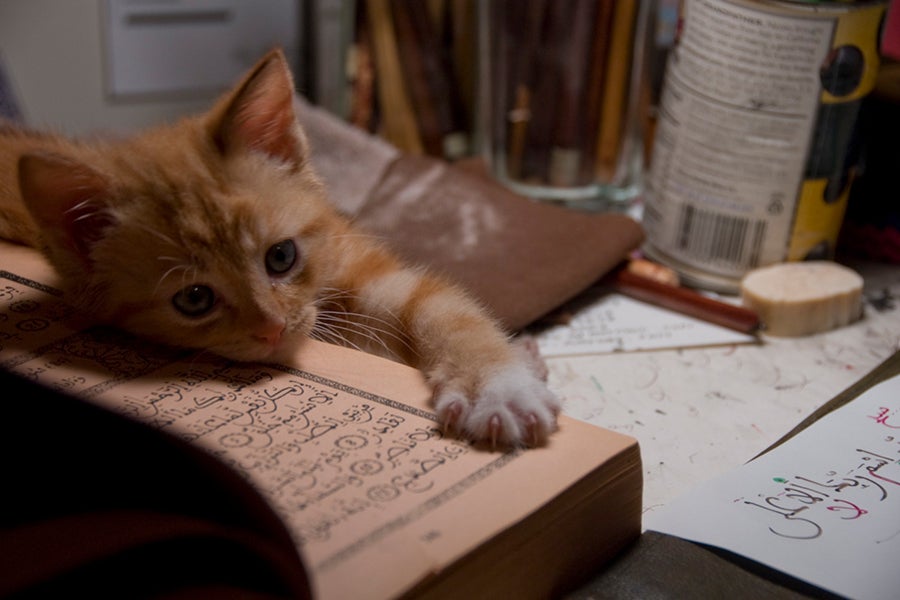Images of the Virgin Mary in Mughal Art Mika Natif Synopsis: The Virgin Mary (Maryam) became a popular image among the Mughal ruling elite from the late 16th to the mid-17th century. Her depiction appears in single-page pictures set in albums, on wall paintings in Mughal palaces, and within illustrated manuscripts. This presentation focuses on…
Tag: Topics
Madrasat al-Firdaws in Aleppo
Madrasat al-Firdaws in Aleppo Yasser Tabbaa Synopsis: Founded in 632/1235 by the Regent Queen Dayfa Khatun, the Madrasat al-Firdaws impresses us today by its female patronage, architectural merits, and by its long and unique inscriptions. Its eleven domes and magnificent mihrab emulate similar features in the earlier Shi‘i Mashhad al-Husayn while its exterior iwan, once…
Mongol Women’s Court Dress
Mongol Women’s Court Dress Eiren Shea Synopsis: This talk discusses Mongol women’s court dress, the formal attire worn by elite Mongol women across the Empire in the 13th and 14th centuries. It focuses in particular on the form of the tall hat worn by elite married women, the boqta, and the wide court robe. Through…
Tree of Pearls: Shajar al-Durr and her Architectural Patronage
Tree of Pearls: Shajar al-Durr and her Architectural Patronage D. Fairchild Ruggles Synopsis: In the mid-thirteenth century, Shajar al-Durr—or “Tree of Pearls”—rose from slavery to become the first female sultan of Egypt, and ultimately the first in what would become the Mamluk line of sultans. With wealth and political power, she built innovative tombs for…
Djingareyber Mosque of Timbuktu: Expression and Innovation at the Saharan Crossroads
Djingareyber Mosque of Timbuktu: Expression and Innovation at the Saharan Crossroads Ashley Miller Synopsis: This presentation examines the history and meaning of Djingareyber Mosque, the Great Mosque of Timbuktu in Mali. Constructed beginning in the fourteenth century under the patronage of Mansa Musa (ruler of the Mali empire from 1312 to 1337), the mosque was…
The History of the Blazon in the Mamluk Period
The History of the Blazon in the Mamluk Period Filiz Çakır Phillip Synopsis: A blazon is defined as a coat of arms or armorial bearings. Well-known blazons are often of European origins. It is lesser known that emblems and blazons were also used in the premodern Islamic world. The Artuqids, Anatolian Seljuks, Ayyubids, Rasulids, Nasrids,…
A Legacy of Female Power: Representations of Queen Humayun Shah from the Deccan’s Ahmadnagar Sultanate
A Legacy of Female Power: Representations of Queen Humayun Shah from the Deccan’s Ahmadnagar Sultanate Namrata B. Kanchan Khamseen Graduate Student Presentation Award 2023 Recipient Synopsis: This presentation explores the removal of Queen Humayun Shah (d. 1569 CE?) from paintings included in an illustrated copy of the masnavi (narrative poem) Ta‘rif-i Husain Shah created during…
Mohamed Zakariya and the Practice of Calligraphy
Mohamed Zakariya and the Practice of Calligraphy Nancy Micklewright Synopsis: This presentation examines the creation of traditional Arabic calligraphy today through the life of Mohamed Zakariya, the foremost practitioner of this art in the United States. Beginning with Zakariya’s journey from Southern California to Virginia, via Morocco and Istanbul, we consider the core elements of…
Picture in Picture: Images of the Sultan in Balkan Princely Portraits
Picture in Picture: Images of the Sultan in Balkan Princely Portraits Alison Terndrup Synopsis: This presentation dives into the relationship between power and sartorial symbolism by looking at portraits of hospodars, or local leaders of Ottoman-Balkan principalities. In the early- to mid-nineteenth century, territories in Southeastern Europe – including the areas we know today as…










